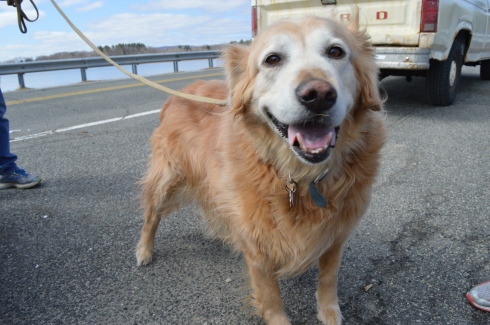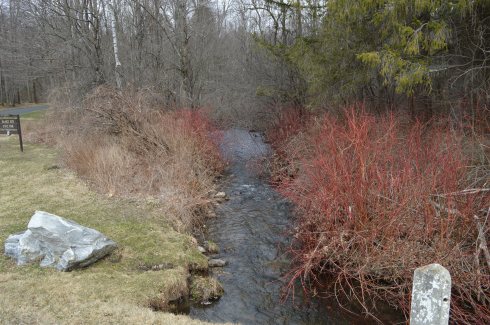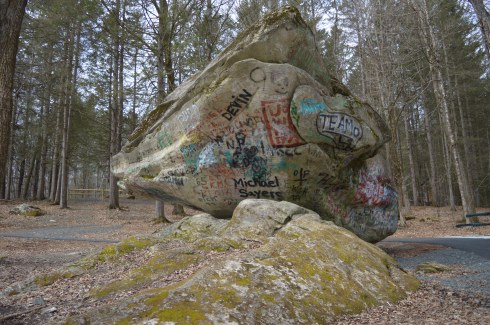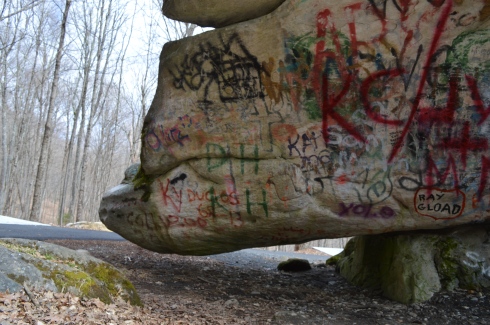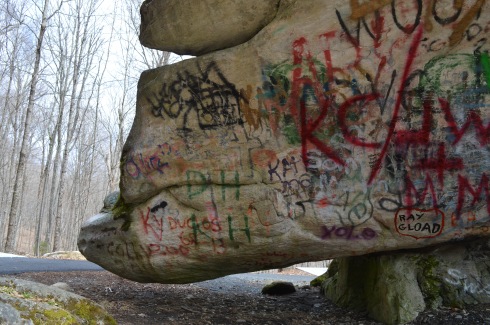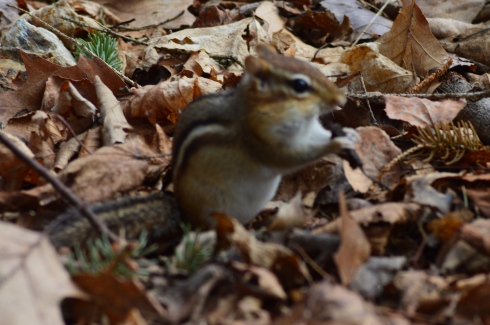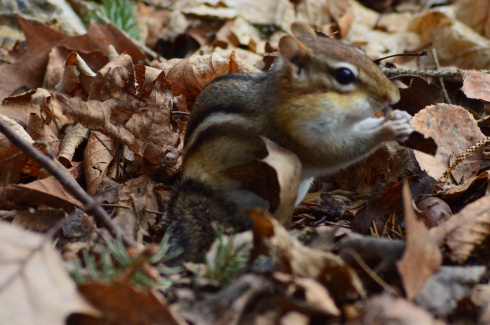Date Of Visit: April 13, 2019
Location: Hancock Shaker Village, 1843 West Housatonic St, Pittsfield MA
Cost: Adults $20 ($18 for Seniors, AAA members, MTA cardholders, and active and retired U.S. Military)
Youth $8 (ages 13-17)
Children (12 and under) are free
Hours:
Hours mid-April through late-June 10am-4pm
Summer and fall hours July through October 10am-5pm
Parking: There is one average sized parking lot with additional lots for overflow parking
Handicapped Accessible: The Visitor Center, restrooms, galleries, store, cafe, and all meeting spaces are wheelchair accessible. Compact-dirt pathways and boardwalks throughout the Village provide access to the gardens and grounds, as well as the mile-long Farm & Forest Trail, which also features interpretive signage. Some buildings in the historic Village are wheelchair accessible via ramp, including the Round Stone Barn and the Trustees’ Office & Store. Keep in mind, however, that most buildings in the historic Village are NOT wheelchair accessible. Wheelchairs are available free of charge with advance reservation
Pet Friendly: No, but service animals are allowed.
Website: Hancock Shaker Village
Highlights: historic homes, animals, educational tours, demonstrations
Summary: The baby animals have arrived at Hancock Shaker Village. In addition to the baby animals, there are tours of the historic homes and educational opportunities for visitors at the village.

Spring in New England can only mean one thing: baby animals at Shaker Village!
Each year, dozens of animals arrive at the museum for the new season. The animals are housed in the appropriately named Round Stone Barn. The barn, which was built around 1839, was burned to the ground December 1, 1864. One hundred tons of hay, ten bushels (roughly 93 gallons) of provender and two adjoining sheds went ablaze during this fire. It was rebuilt during the mid 1870s.

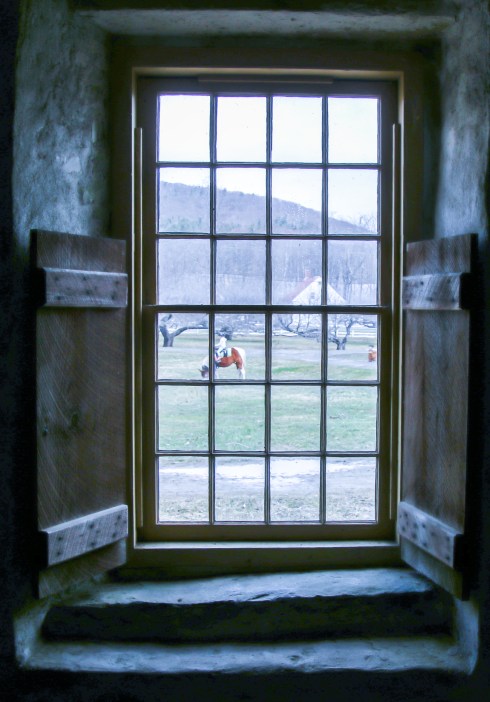
Sheep, goats, pigs, chicken and other animals were present during my visit. People were encouraged to go into the pens with the animals and pet them or take photos.
But, there weren’t just babies at the village. Older animals, in some cases the mom and dad of the babies, were also at the museum.
Being located so close to the mountains and countryside of New York (we actually drove through New York for a brief period of time), the views from the farm were beautiful.
The farm also includes historic homes. The self guided tour has signs with information about each house with background about each place.
One of my favorite buildings is the Blacksmith’s shop. The Shakers made all of the metalwork used for their buildings. In the Blacksmith’s shop, which was built in 1874, a blacksmith conducts demonstrations of how they make the hardware they use. He was the third generation blacksmith in his family and the last. No one else in his family wanted to continue the blacksmith trade.
There is also a room with tanning vats, a cider press and a turbine.

But my favorite buildings from that era were the homes, offices and stores. The Trustees Office and store and family living quarters housed the souvenirs people would buy during their visits. It was also the place where people on business trips could place orders for goods.
The buildings and sheds on the farm give the premises a very old time feel.
There was also a play area for children where they could play with toys from that era and play with other toys. There was also face painting, horse rides and a balloon shaping artist.
The only really difficult part of the photography session, besides the animals moving when I took their photos, was photographing the blacksmith. It had all of the elements of a challenging photo shoot: low light, motion when he used the tools to make the hardware and the fire which was in stark contrast to the low light in the room. I wanted to show the flame on the stove and the light on the tool he was using. So, I didn’t want to boost the ISO or aperture too much. So, what did I do?
The hard part for me is when there is motion and low light. You want to use a fast shutter speed to photograph motion (500 or higher). But, when there’s not a lot of light you need to use a slower shutter speed. I didn’t have my tripod with me (and the museum doesn’t allow tripods on their property). So, I used a fast shutter speed (500) and lowered my aperture to the lowest setting (3.5). To make up for the lack of light I boosted my ISO to 2000 which is pretty high. I knew that I could add noise reduction to address the noise or grainy photo from the high ISO in the editing process (which isn’t without its drawback that I will address in a future post).
It was important to capture the motion without seeing any blur and I wanted to make sure the fire looked as realistic and was an accurate display of what I saw, so I went with a high ISO. Even if I did have my tripod with me it wouldn’t have been very useful as I needed a fast shutter speed rather than a slow shutter speed to capture the motion of the blacksmith. You can always adjust the image by using noise reduction and using a higher or lower contrast and exposure setting when you edit in LightRoom or PhotoShop, although you do want to get the best photo as possible in the camera to avoid having to edit it too much. I did end up using a low exposure in LightRoom to show how dark the room was when I took the photographs and to highlight the light from the fire.
Below are some of the photos of the blacksmith which show how I had to adjust the settings to capture his motion and the light from the fire. As you can see from the photo, the high ISO (2000) allowed me to capture both the motion of the blacksmith as he used the pulley to add oxygen to the fire to keep it going and you can see the sparks clearly from the fire. The noise reduction tool unfortunately can take away some of the details. But it was a give and take. I used the noise reduction to get rid some of the grain from the high ISO knowing that some of the features (like the background) may be a little dull.

2000 ISO, 18 mm, 3.5 aperture, 1/500 shutter speed.

2000 ISO 18 mm 3.5 aperture 1/500 shutter speed
I had to use a fast shutter speed (500) to capture the motion of the tool he was using without getting any blur and I sacrificed my ISO (technically I probably could have used a lower ISO, and I do have some photos of the blacksmith with an ISO of 1250). I think I was playing it a little too safe with the high ISO
I ran into the same situation photographing the animals. The barn was not well lit and the animals move around a lot. I just had to use a high shutter speed (500 or 1000) and a low aperture (3.5 for most shots) and I was able to keep the ISO relatively low (around 400 for most shots) . Again, I was able to use the settings in LightRoom to add color and bring out some contrast in the photos.
Shooting outside was not too hard, especially since I had some cloud cover which prevented sun glare and other issues you can run into when the sun is bright. However, I have to fess up that I did have a 640 ISO (I should have bumped it down to 100 or so) because I forgot to adjust it after photographing the animals i the barn. So, always check your settings when you’re changing locations at a photo shoot!












































































